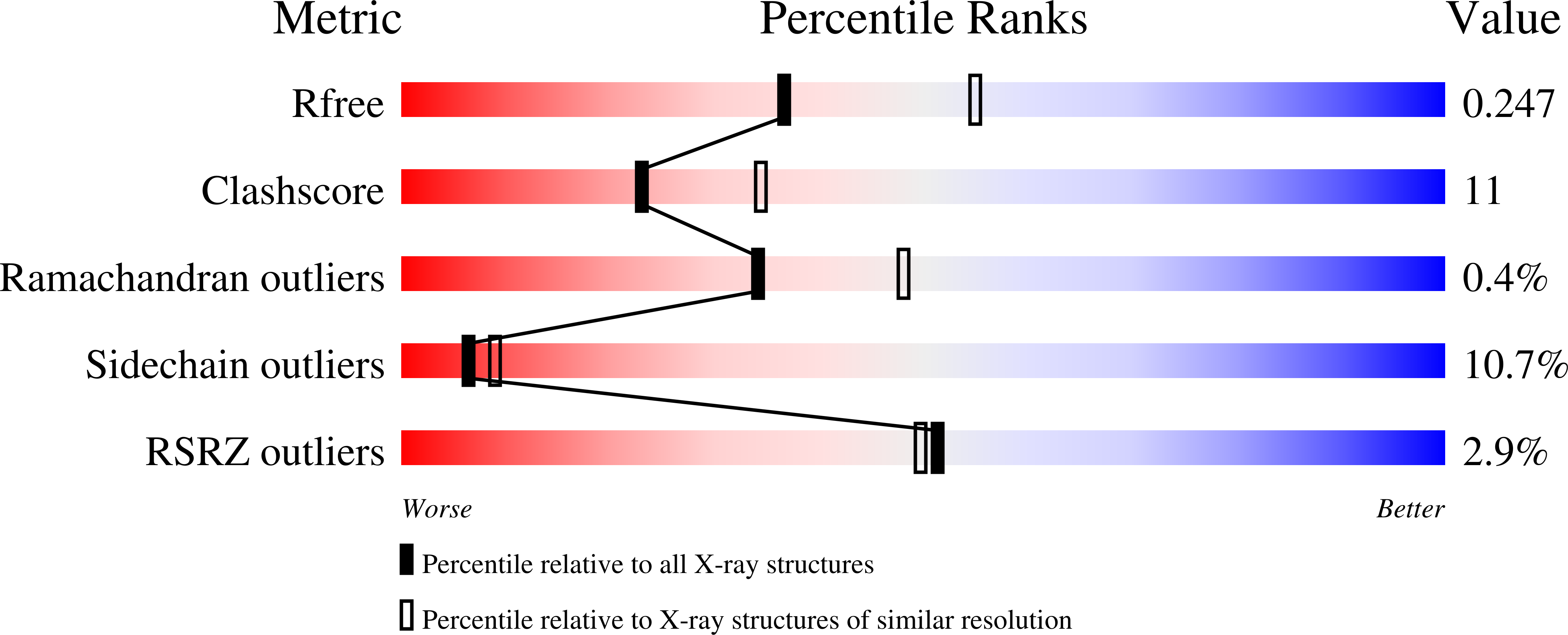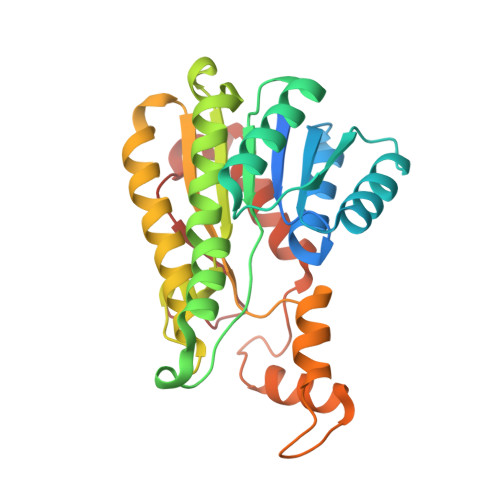Structural and Biochemical Studies of the Hedamycin Type II Polyketide Ketoreductase (HedKR): Molecular Basis of Stereo- and Regiospecificities.
Javidpour, P., Das, A., Khosla, C., Tsai, S.C.(2011) Biochemistry 50: 7426-7439
- PubMed: 21776967
- DOI: https://doi.org/10.1021/bi2006866
- Primary Citation of Related Structures:
3SJU - PubMed Abstract:
Bacterial aromatic polyketides that include many antibiotic and antitumor therapeutics are biosynthesized by the type II polyketide synthase (PKS), which consists of 5-10 stand-alone enzymatic domains. Hedamycin, an antitumor antibiotic polyketide, is uniquely primed with a hexadienyl group generated by a type I PKS followed by coupling to a downstream type II PKS to biosynthesize a 24-carbon polyketide, whose C9 position is reduced by hedamycin type II ketoreductase (hedKR). HedKR is homologous to the actinorhodin KR (actKR), for which we have conducted extensive structural studies previously. How hedKR can accommodate a longer polyketide substrate than the actKR, and the molecular basis of its regio- and stereospecificities, is not well understood. Here we present a detailed study of hedKR that sheds light on its specificity. Sequence alignment of KRs predicts that hedKR is less active than actKR, with significant differences in substrate/inhibitor recognition. In vitro and in vivo assays of hedKR confirmed this hypothesis. The hedKR crystal structure further provides the molecular basis for the observed differences between hedKR and actKR in the recognition of substrates and inhibitors. Instead of the 94-PGG-96 motif observed in actKR, hedKR has the 92-NGG-94 motif, leading to S-dominant stereospecificity, whose molecular basis can be explained by the crystal structure. Together with mutations, assay results, docking simulations, and the hedKR crystal structure, a model for the observed regio- and stereospecificities is presented herein that elucidates how different type II KRs recognize substrates with different chain lengths, yet precisely reduce only the C9-carbonyl group. The molecular features of hedKR important for regio- and stereospecificities can potentially be applied to biosynthesize new polyketides via protein engineering that rationally controls polyketide ketoreduction.
Organizational Affiliation:
Department of Molecular Biology and Biochemistry, University of California, Irvine, Irvine, California 92697, United States.















